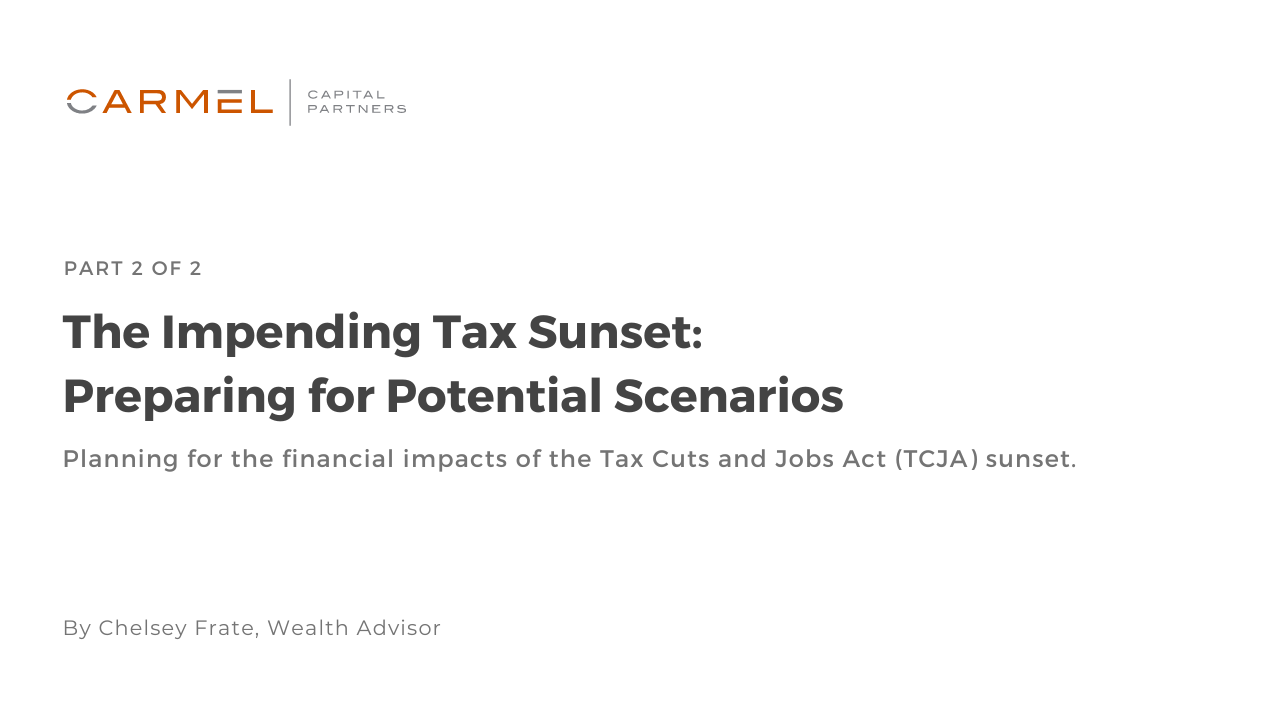Preserving Wealth Across Generations with Tax Loss Harvesting
Tax loss harvesting is a powerful strategy that, while commonly associated with annual tax planning, can also play a crucial role in long-term estate...
Estate and tax planning are crucial items to complete as part of a family's financial plan. It is a topic that crosses everyone's mind but gets pushed to the bottom of the to-do list. It can be complex, confusing, and time-consuming, but the benefits that it can provide to your family and the generations to come are invaluable.
Most of the families we serve are California residents. Therefore, it is imperative to understand the complexities of state and federal tax laws. Our goal is to educate families on their available strategies and help implement a plan aligned with their unique goals and objectives.
For example, consider a tech entrepreneur in California with a growing business valued at over $10 million. By establishing a GRAT, they transfer a portion of their business into the trust, retaining annuity payments for a term of years. The business continues to grow, and at the end of the term, the appreciation exceeds the IRS's assumed interest rate, passing to the heirs tax-free. Concurrently, a CRT is set up with other assets, providing the entrepreneur with income and a significant tax deduction while also benefiting a charity they are passionate about.1
In conclusion, advanced tax minimization strategies are essential for California families and businesses aiming to preserve their estates for future generations. By understanding and utilizing tools such as trusts, life insurance, and tax loss harvesting, you can minimize taxes while maximizing the impact of your legacy.
In part two of this series, we'll dive deeper into tax loss harvesting, how it works, and how it can benefit you.
Consult with a specialized wealth advisor to help tailor these strategies to your circumstances and stay informed about California's latest tax law developments.
1This hypothetical scenario is for illustrative purposes only. Actual performance and results will vary. This example does not constitute a recommendation as to the suitability of any investment for any person or persons having circumstances similar to those portrayed, and a financial advisor should be consulted. This example does not represent actual clients. Any resemblance to actual people or situations is purely coincidental.
The content is developed from sources believed to be providing accurate information. The information in this material is not intended as tax or legal advice. Please consult legal or tax professionals for specific information regarding your individual situation. The opinions expressed and material provided are for general information and should not be considered a solicitation for the purchase or sale of any security. Investment advisory services are offered through Carmel Capital Partners, an SEC Registered Investment Advisor.

Tax loss harvesting is a powerful strategy that, while commonly associated with annual tax planning, can also play a crucial role in long-term estate...

In Part 1 of this series, we reviewed the key provisions of the 2017 Tax Cuts and Jobs Act (TCJA) and examined their potential impact on American...

The Tax Cuts and Jobs Act (TCJA) of 2017 introduced numerous benefits to U.S. tax law but are set to expire at the end of 2025. Families might be...